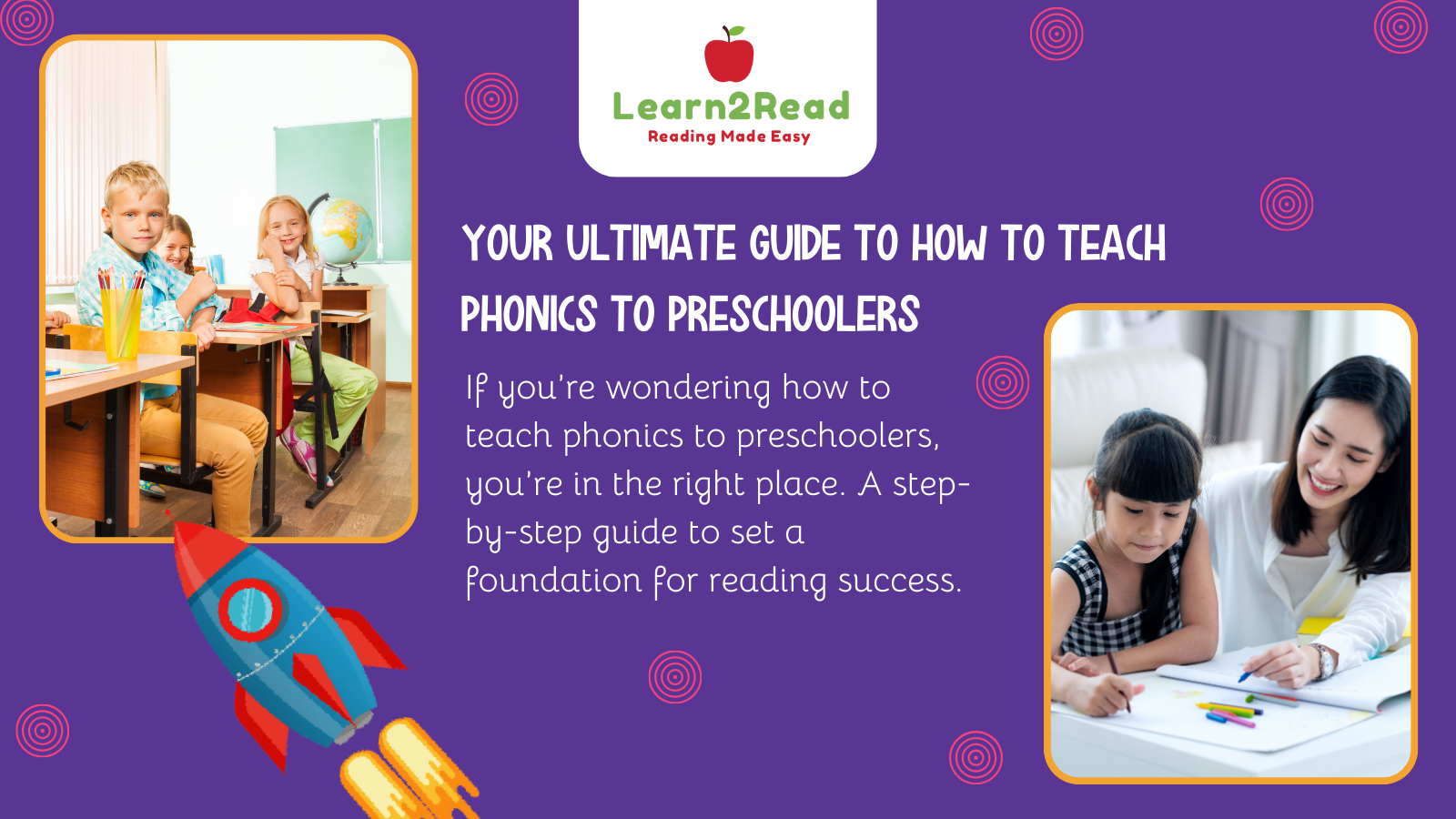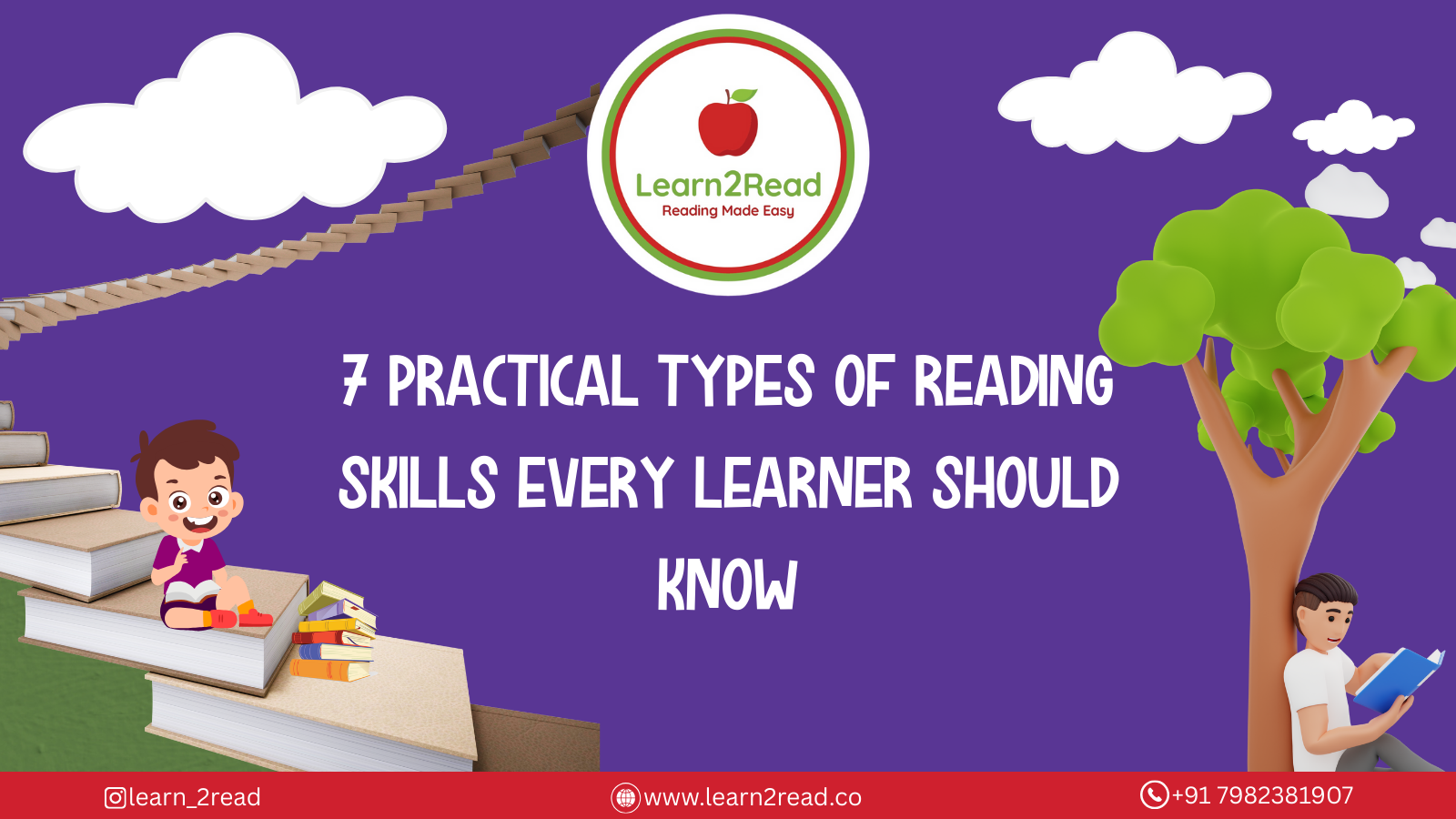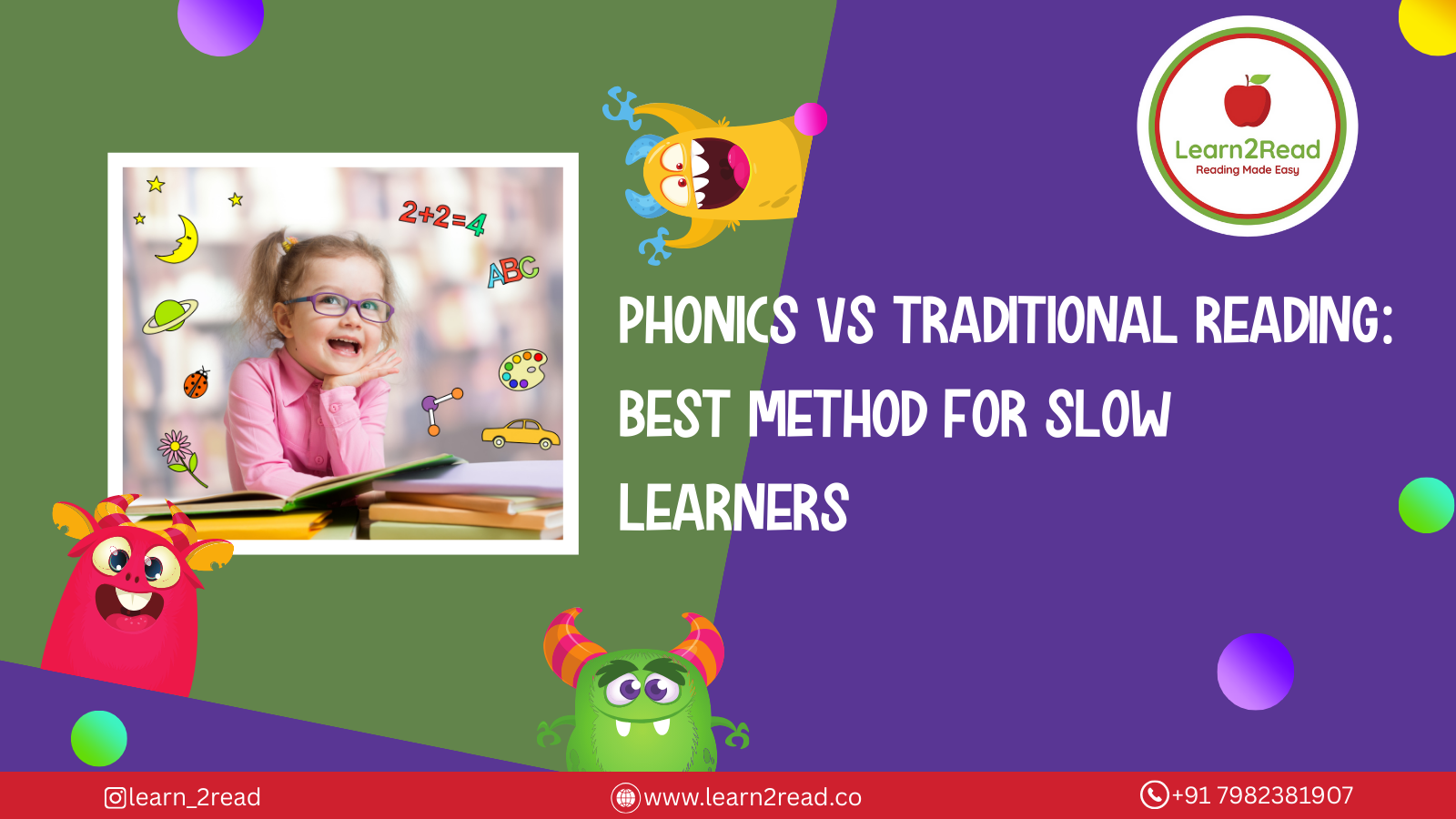19 September 2025
How to Teach Phonics to Preschoolers: A Step-by-Step Guide

How to Teach Phonics to Preschoolers: A Step-by-Step Guide
posted on : 4 September 2025
Are you struggling to find the right approach to teaching phonics to your children? Or looking for any resources for how to teach phonics to preschoolers. Well, you’re not the only one struggling. Teaching and learning phonics can both be stressful. Until you’ve seen our step-by-step guide with playful activities and effective tips.
Phonics is a crucial skill for developing the basics. This blog will teach you phonics that is not boring. Moreover, it builds strong reading skills. Let’s have a look at phonics activities and why they’re important.
Why is Phonics Important? And How to Learn Phonics at Home?
Phonics helps children learn the relationship between words and their sounds. Your child develops fundamental skills required for reading and spelling words. Learning phonics helps decode unfamiliar words, making reading easy. Children feel more confident when they recognize patterns in the English language.
Teaching phonics at home is no longer stressful. With the right approach and fun activities,make your child fall in love with reading . Here is a list of 5 interactive phonics activities for kids to get started with
1. Connecting Letter Sounds
Begin by introducing the sounds of the alphabet, not just the names. You can use songs, flashcards, or objects to help children associate sounds.
For more guidance, consider Learn2Read videos where each letter-sound relationship is demonstrated in simple ways.
2. Phonics Letter Cards
Teach your child phonics by using letter flash cards. This makes learning faster & smarter. It’s an effective beginner tool as children can focus on one sound at a time. Start with simple sounds & help them understand those sounds with a familiar word.
For example:
- a sounds /a/ as in ant
- b sounds /b/ as in bat
- c sounds /c/ as in cat, and so on.
3. Blending Sounds Together
Once your child is aware of the sounds, teach them to blend them to form simple words. For example, cat, bat, or map.
4. Practice With Phonics Books
Your child can learn phonics from the beginner-level practice books. These books teach step-by-step phonics and help decode words.
5. Phonics Activities & Games
You can incorporate games like matching letters, sound hunts, or online phonics games. Learning doesn’t have to be boring. Make it a fun learning experience so your kids get interested.
How to Teach Phonics to Preschoolers
Teaching phonics to preschoolers may sound daunting. But it’s not. It's all about introducing phonics through engaging games and activities. Here is a list curated for you to teach phonics to your kids.
Introduce Phonemic Awareness
Phonemic awareness helps kids hear and play with words. Even before they learn or identify any letters. They listen to sounds and can understand that each letter has distinct small sounds.
One of the best ways to introduce phonemic awareness is by playing rhyming games. You can say words and ask your children to think of similar-sounding words. For example, you said rat, then your child can further add words like hat, bat, or cat.
Introduce Letters and Sounds
Since the kid is aware of phonemes, you can introduce letters and sounds to them. Teach them which letter makes what sound. Gradually, with practice, your child will be able to identify letters and their corresponding sounds.
Teach Blending
Once the child starts understanding a few sounds, you can teach them blending. Show them how to blend the sounds to form a word. You can use visuals, which make phonics teaching efficient and easy.
Knowledge Of Decoding Words
Once your child is aware of blending words, you can move on to the next step. Teach your children to decode new or unfamiliar words. You can start with the pattern of similar sounds and words. You can try the pattern-matching technique, which is effective and an interesting method to understand unfamiliar words and ideas.
Daily Practice
Consistent learning sessions are best for preschoolers. You can invest 10–15 minutes daily in teaching phonics to your kids. These short practice sessions will maintain their interest, not overwhelm them.
Celebrate Small Wins
Now comes the most crucial step: encouraging your children. You must praise their efforts and small progress. This will boost their confidence. As well as, your child will stay motivated in this ‘learn the phonics’ journey.
Therefore, phonics for kids is now made easier for you. With patience and consistency, you can teach phonics to your children in an enjoyable way. Lay a strong foundation for preschoolers for their journey of learning phonics.
Final Thought
How to Teach Phonics to Preschoolers usually starts with interactive phonics activities. Your children learn to connect the letters and sounds through play and storytelling. By following the guide on how to teach phonics step by step, your child develops strong reading skills.
Make this learning and teaching journey memorable for you and your child. Developing a love for reading at an early age for preschoolers is a smart decision. Starting early and continuing with consistency will be rewarding for your children.
Begin your educational journey with Learn2Read today! Learning phonics will be fun and effortless with us.
Frequently Asked Questions (FAQs)
1. What skills do children develop by learning phonics?
Your child develops these 5 key skills by learning phonics, including learning the 42 important sounds of phonics, letter formation, blending, segmentation, and at lastly, learning tricky words.
2. Which phonics to teach first to children?
You should start with Group 1 of Jolly Phonics, which consists of s, a, t, p, i, n. These are common, easy to learn, and allow quick formation of three-letter words. Moreover, introduce engaging phonics activities to your kids to develop their interest in reading.
3. How to teach phonics to preschoolers?
Here's a simple guide on how to teach phonics to your kids:
- Start by introducing phonemic awareness to your kids.
- Then, teach your kids blending sounds to frame words.
- Introduce spelling rules and segmentation.
- Thereafter, you can teach tricky and unfamiliar words to your child.
- Last but not least, be consistent and appreciate their efforts.
These step-by-step phonics will help your child learn to read easily.
Latest Posts


19 September 2025
Types of Reading Skills and How to Develop Them in Kids

19 September 2025
Phonics vs Traditional Reading: What Actually Works for Early Learners?

19 September 2025



